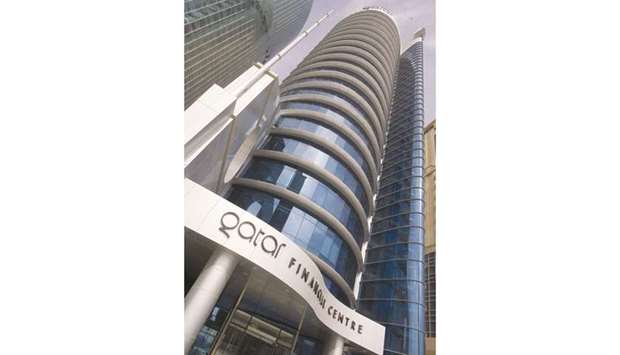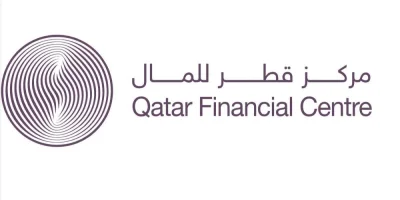The Qatar Financial Centre (QFC) has favoured Singapore model of targeted policy intervention to carve a niche place in the global financial services industry, especially in view of the growing significance of asset management industry, in helping the QFC become an international hub for the sector.
The QFC’s moves come amidst assets under its management (AuM) more than doubling on a yearly basis to QR61.2bn in the fourth quarter (Q4) of 2020. The robust growth in AuM indicates the growing potential contribution of the QFC to the local economy and the potential diversification.
Highlighting that more AuM can bolster Qatar’s global reputation as a financial services hub, for which AuM can be a key contributor; the QFC said "this may require targeted policy interventions." In this regard, the QFC cited the model of Singapore – ranked sixth in the Global Financial Centres Index (GFCI) in 2019.
Highlighting that the broader Singaporean financial services sector journey can “provide useful insights for Qatar”; it said the Singaporean government targeted, from an early stage, specific financial markets or sectors that were considered to be potential growth sectors – and then developed focused policies to grow those sectors.
The Singapore government created the infrastructure and incentives to give opportunity for the asset management sector to grow, it said, adding in nominal terms, AuM rose from $203bn in 2000 to $2.9tn in 2019.
The South Asian country has seen impressive and consistent growth over recent decades, and AuM has played a key role in its success.
The finance and insurance sector, acting as the main intermediary, now contributes over 14% of Singapore’s GDP (gross domestic product) and is the fourth largest economic sector in the country. Employment in this sector has also grown significantly over this period.
The QFC has already developed important incentives for the asset management industry wherein it offers a tax incentive (0%) for asset managers with AuM of at least $30mn and a small team (three full-time employees) in Qatar.
The value of AuM in the QFC complement the centre's gross value added (GVA) contribution to Qatar’s GDP as a measure of QFC’s contribution to the Qatari economy.
Whilst QFC’s GVA contribution of $1.89bn in 2018 shows the substantial impact QFC has made on the Qatari economy in the recent past, the AuM show the contributions the QFC may potentially make in the future.
This is because the AuM is an indicator of future economic value through the activity they may generate. The AuM, therefore, provide an alternative view of QFC’s economic impact by showing the QFC’s future economic potential.
There are wide ranges of supporting economic benefits that may arise through the observed increase in AuM on the QFC’s platform.
On AuM's potential role in the diversification of Qatari economy, the QFC said in general, asset management can match investors seeking appropriate savings or investment vehicles and the financing needs of the real economy.
Further, financial vehicles raise capital from retail and institutional investors and provide funding to other sectors, such as monetary financial institutions, non-financial corporations and government agencies.
Data from surveys of asset management and investment services companies in the QFC shows that nearly 70% of their overall supplier base comprised companies based in Qatar, demonstrating the indirect benefits QFC companies in the asset management sector are creating for local businesses.
Such activity can, in turn, help boost economic diversification in Qatar by advancing the financial services industry and the broader sectors in the economy that support it – hence increasing the size and complexity of the local non-oil economy, it said.
In this regard, the QFC highlighted that the country’s sovereign wealth fund Qatar Investment Authority is already investing in Aventicum and is expected to work with more local investment managers.
The QFC’s moves come amidst assets under its management (AuM) more than doubling on a yearly basis to QR61.2bn in the fourth quarter (Q4) of 2020. The robust growth in AuM indicates the growing potential contribution of the QFC to the local economy and the potential diversification.
Highlighting that more AuM can bolster Qatar’s global reputation as a financial services hub, for which AuM can be a key contributor; the QFC said "this may require targeted policy interventions." In this regard, the QFC cited the model of Singapore – ranked sixth in the Global Financial Centres Index (GFCI) in 2019.
Highlighting that the broader Singaporean financial services sector journey can “provide useful insights for Qatar”; it said the Singaporean government targeted, from an early stage, specific financial markets or sectors that were considered to be potential growth sectors – and then developed focused policies to grow those sectors.
The Singapore government created the infrastructure and incentives to give opportunity for the asset management sector to grow, it said, adding in nominal terms, AuM rose from $203bn in 2000 to $2.9tn in 2019.
The South Asian country has seen impressive and consistent growth over recent decades, and AuM has played a key role in its success.
The finance and insurance sector, acting as the main intermediary, now contributes over 14% of Singapore’s GDP (gross domestic product) and is the fourth largest economic sector in the country. Employment in this sector has also grown significantly over this period.
The QFC has already developed important incentives for the asset management industry wherein it offers a tax incentive (0%) for asset managers with AuM of at least $30mn and a small team (three full-time employees) in Qatar.
The value of AuM in the QFC complement the centre's gross value added (GVA) contribution to Qatar’s GDP as a measure of QFC’s contribution to the Qatari economy.
Whilst QFC’s GVA contribution of $1.89bn in 2018 shows the substantial impact QFC has made on the Qatari economy in the recent past, the AuM show the contributions the QFC may potentially make in the future.
This is because the AuM is an indicator of future economic value through the activity they may generate. The AuM, therefore, provide an alternative view of QFC’s economic impact by showing the QFC’s future economic potential.
There are wide ranges of supporting economic benefits that may arise through the observed increase in AuM on the QFC’s platform.
On AuM's potential role in the diversification of Qatari economy, the QFC said in general, asset management can match investors seeking appropriate savings or investment vehicles and the financing needs of the real economy.
Further, financial vehicles raise capital from retail and institutional investors and provide funding to other sectors, such as monetary financial institutions, non-financial corporations and government agencies.
Data from surveys of asset management and investment services companies in the QFC shows that nearly 70% of their overall supplier base comprised companies based in Qatar, demonstrating the indirect benefits QFC companies in the asset management sector are creating for local businesses.
Such activity can, in turn, help boost economic diversification in Qatar by advancing the financial services industry and the broader sectors in the economy that support it – hence increasing the size and complexity of the local non-oil economy, it said.
In this regard, the QFC highlighted that the country’s sovereign wealth fund Qatar Investment Authority is already investing in Aventicum and is expected to work with more local investment managers.




